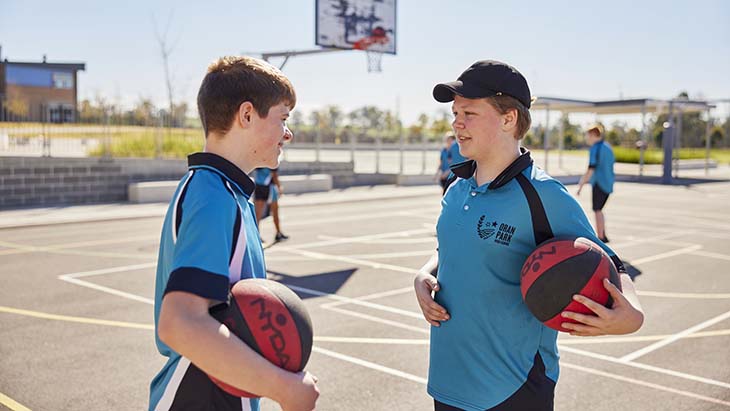Evidence-based strategies for emotions
Teach students a variety of skills to regulate emotions
Consider teaching students to reappraise the negatives
Reappraisal involves thinking about a stressful or negative event from a different perspective. Reappraisal can help students reduce or change the emotional stress of negative events. Reappraisal might involve attempting to learn from the experience, or considering whether the situation is as bad as first thought.
Our what is bullying school story (pages 9 and 10) gives an example of removing emotion from a situation, and looking at a situation from a different point of view.
Ask students to narrate experiences
If a student experiences an event that makes them angry, narrating the experience back to you in detail may help to quickly reduce their anger. Ask them to share what happened, how they felt and what they learned.
Show students how to distract themselves
Distraction from intense emotions like anger or anxiety may help alleviate students’ stress. This could include getting a student to talk about something positive, going for a walk, taking a time out to calm down before responding, reading, or listening to music.
Encourage students to accept their emotions
Encouraging students to accept all emotions, whether viewed as positive or negative, can be helpful. Thoughts such as “This isn’t comfortable or pleasant, but I can accept it” or “This isn’t the worst thing that could happen” may help students to accept emotionally distressing events.
Teaching students that all emotions will pass and are not permanent can also help.
Teach students relaxation techniques
Practising relaxation breathing with your students can support them in managing anxiety and calming down. Relaxation breathing might be particularly helpful before an activity that tends to cause a student to become stressed or anxious.
Access the mindfulness techniques page to help you look after your mental health. Refer to the anxiety page to find more strategies to help students manage their anxiety.

Create a positive school and class environment
Promote independent learning
Independent learning can be encouraged by listening and responding to students’ wants and needs, supporting their motivations, and providing opportunities for students to be make decisions on their own.
Improving a student’s sense of autonomy can help them learn to manage emotions independently and foster resilience.
Build positive relationships with students
Positive teacher-student relationships can encourage students to feel connected with their school. Feeling connected to school is associated with better emotion regulation and independence, which can in turn support resiliency.
Positive relationships involve warmth, trust and accepting and supporting students’ emotions while setting appropriate limits on behaviour.
Schedule regular positive activities
Positive activities during lessons like short bursts of physical activity or classroom games may improve students’ mood and school engagement.
Encourage student voice and participation wherever possible
Providing authentic opportunities for students to be involved helps them to feel they are active, autonomous participants in the classroom.
Teach students to manage problems
Build problem solving skills
Encouraging students to plan and problem solve can help them find ways to change or cope with stressful events. Coming up with adaptive choices when faced with stressful problems is one of the most helpful skills to learn to help regulate our feelings.
Support students to plan steps when faced with stressful or challenging situations such as identifying what a problem is, thinking of possible solutions, choosing the best solution, and thinking about whether it worked.
Refer to our problem solving guide for more information on problem solving.
Support seeking
It may help to encourage students to seek support when faced with stressful or challenging situations. Support seeking may involve emotional support to help students manage emotions like stress, anger or worry.
It could also mean assisting students to find ways of solving social, emotional or academic problems. Support could include student services from the school or talking to their general practitioner.